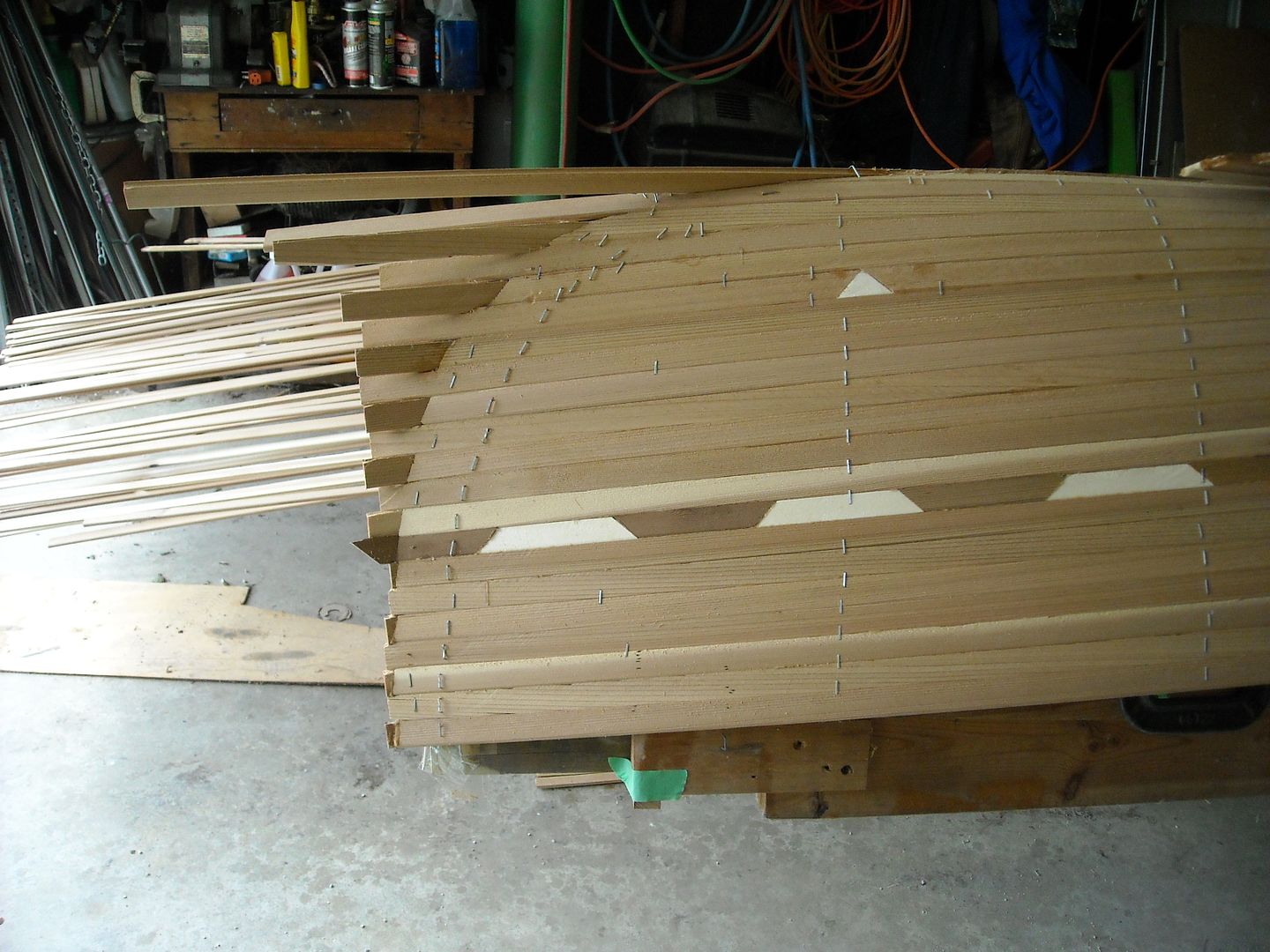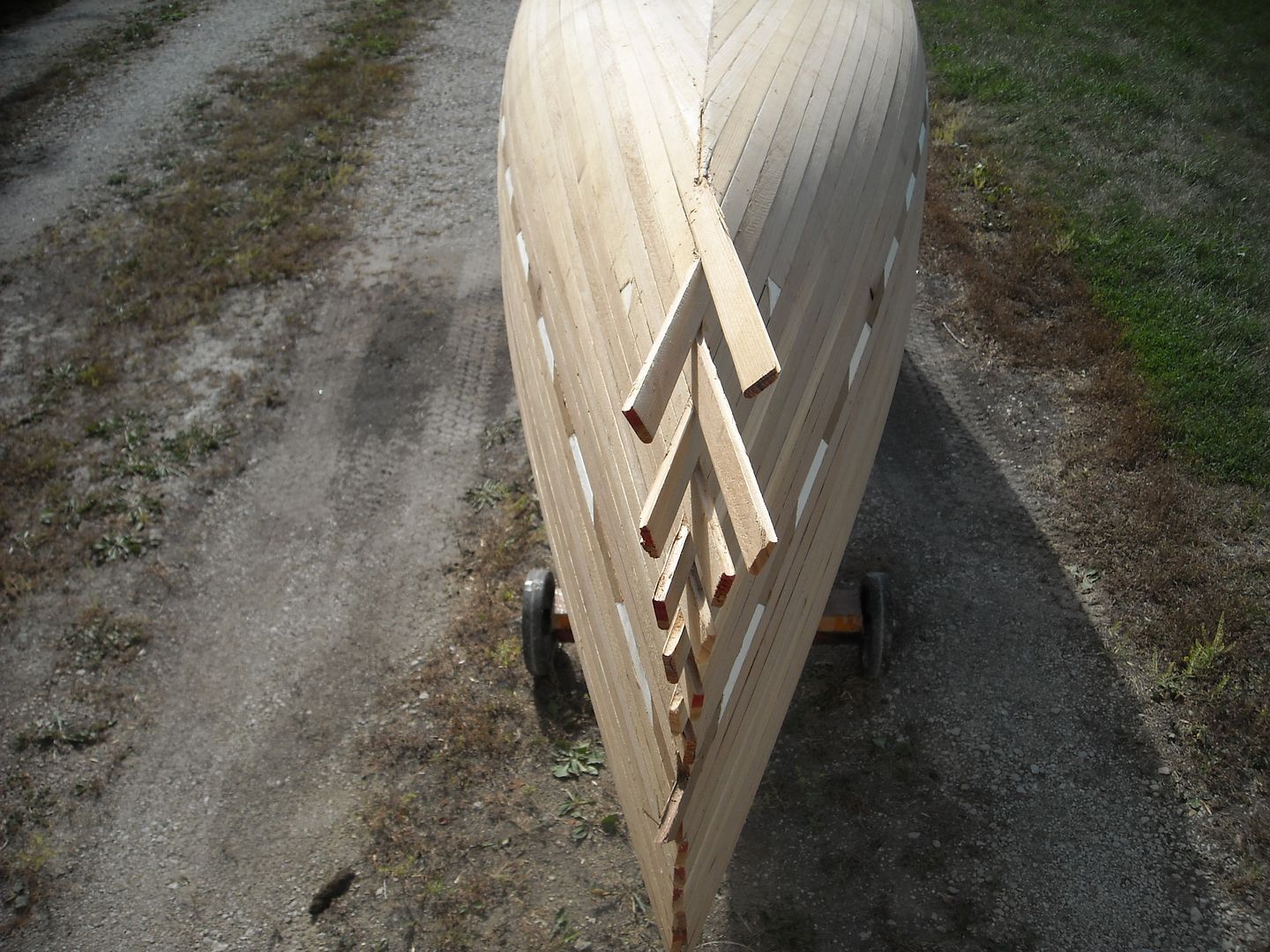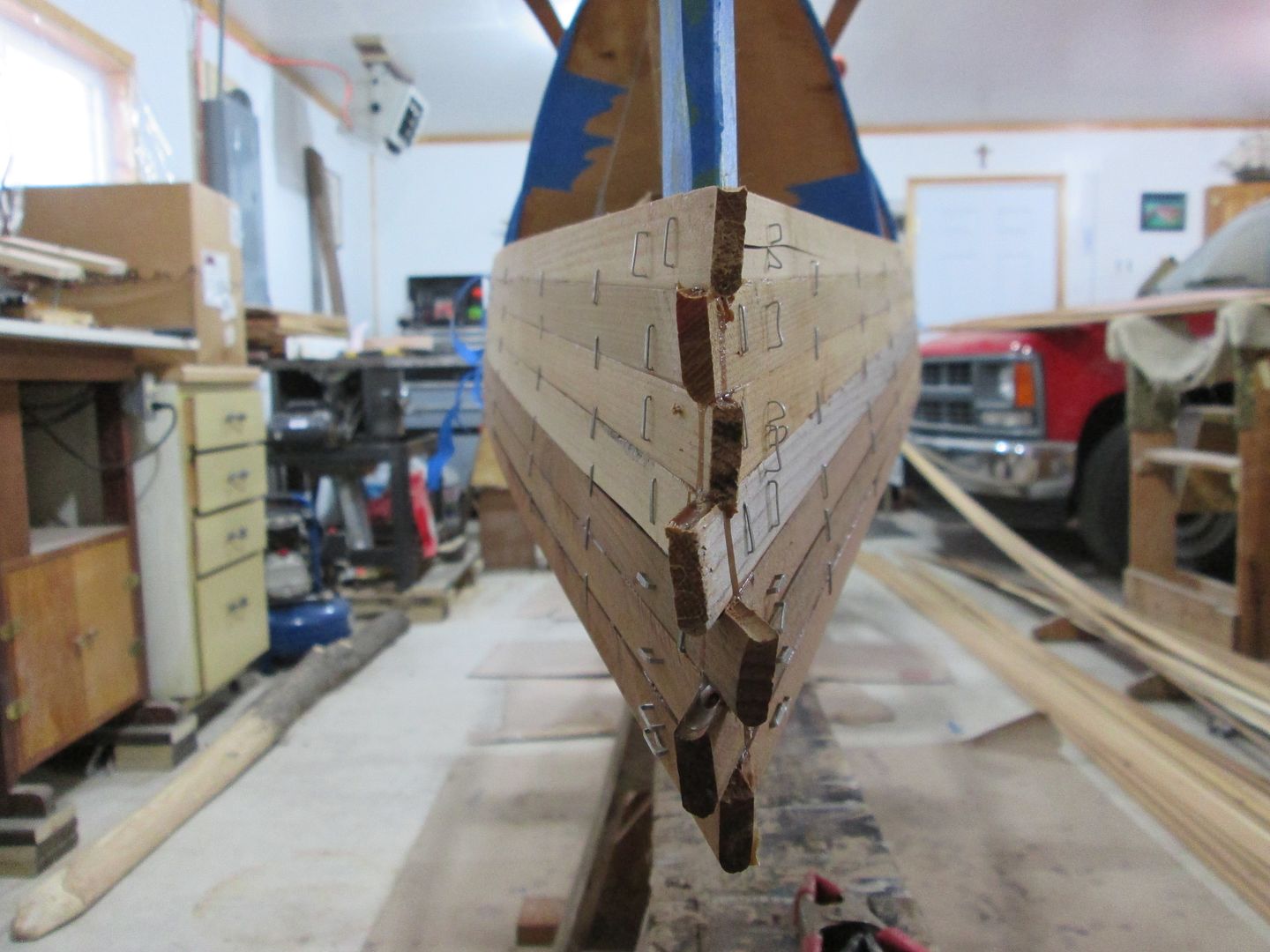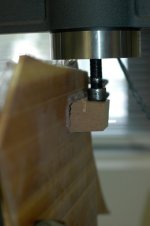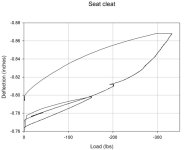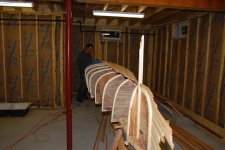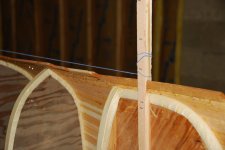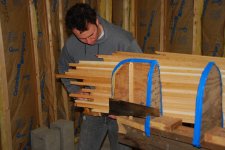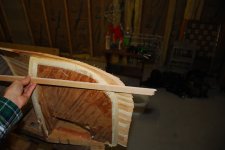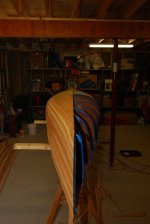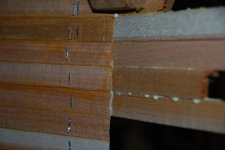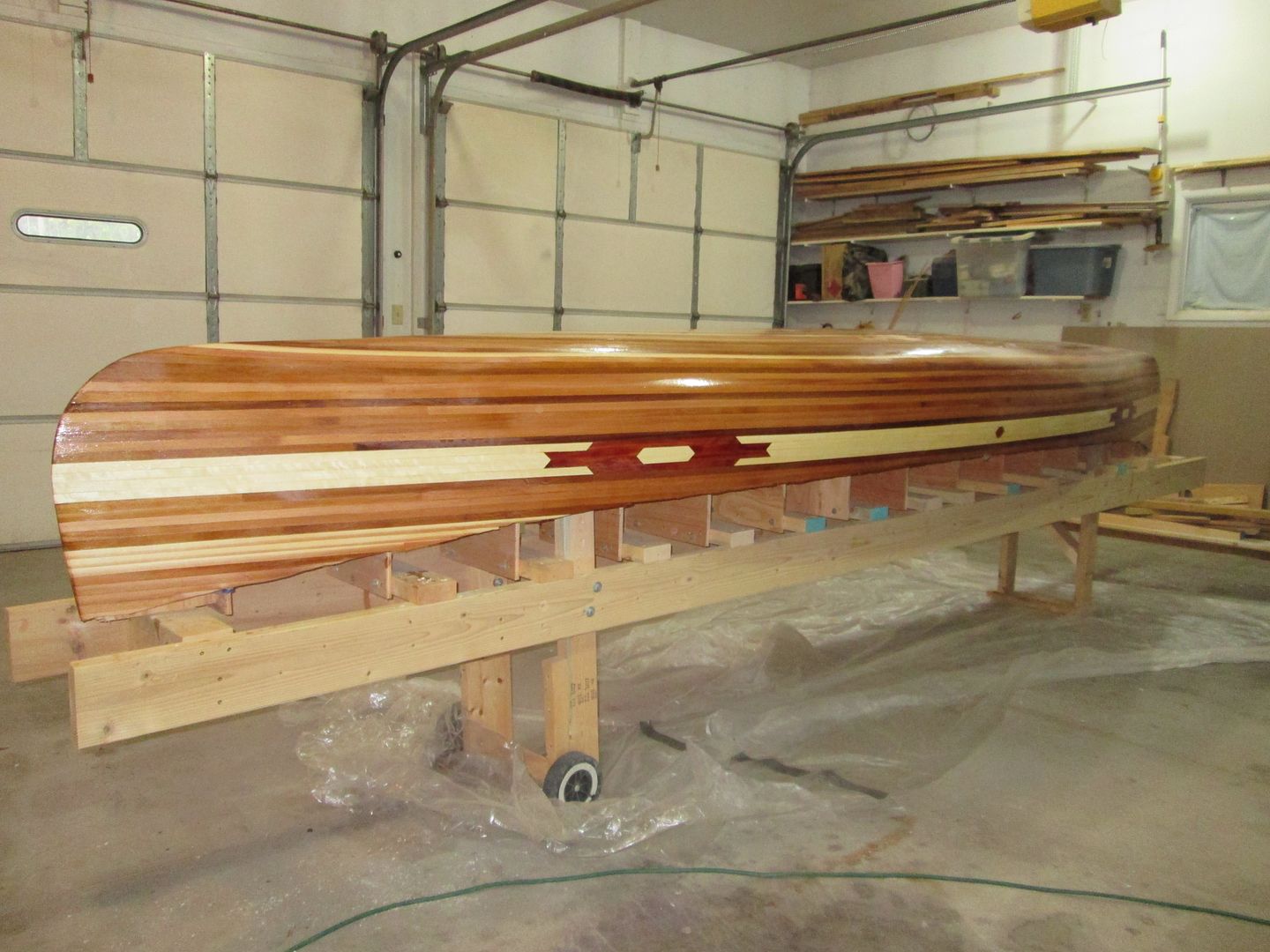Greetings,
I'm thinking of trying my hand at a stem-less build for my next canoe. I've heard it referred to as the Minnesota Method. I've always built with inner & outer stems but this will be a light duty flat water recreational cruiser and I'd like to save a bit of weight here and there. I plan to use glued cedar gunwales towards that goal.
When building stem-less are the bow and stern forms tapered to receive the strips as one does with an inner stem?
Lay one side strip, angle trim it, lay its opposite counterpart, let it fly slightly and do this in an alternating pattern?
How is the strip end gluing best done?
I imagine a stem-less build has some interesting aspects when it comes time to do the interior layup. This boat will not have a pointy pinched bow/stern but I'm guessing a bias-cut strip of cloth glassed in each end prior to laying out the main cloth might be a good idea.
Any comments and experiences on building stem-less would be most appreciated.
Thank you.
I'm thinking of trying my hand at a stem-less build for my next canoe. I've heard it referred to as the Minnesota Method. I've always built with inner & outer stems but this will be a light duty flat water recreational cruiser and I'd like to save a bit of weight here and there. I plan to use glued cedar gunwales towards that goal.
When building stem-less are the bow and stern forms tapered to receive the strips as one does with an inner stem?
Lay one side strip, angle trim it, lay its opposite counterpart, let it fly slightly and do this in an alternating pattern?
How is the strip end gluing best done?
I imagine a stem-less build has some interesting aspects when it comes time to do the interior layup. This boat will not have a pointy pinched bow/stern but I'm guessing a bias-cut strip of cloth glassed in each end prior to laying out the main cloth might be a good idea.
Any comments and experiences on building stem-less would be most appreciated.
Thank you.

